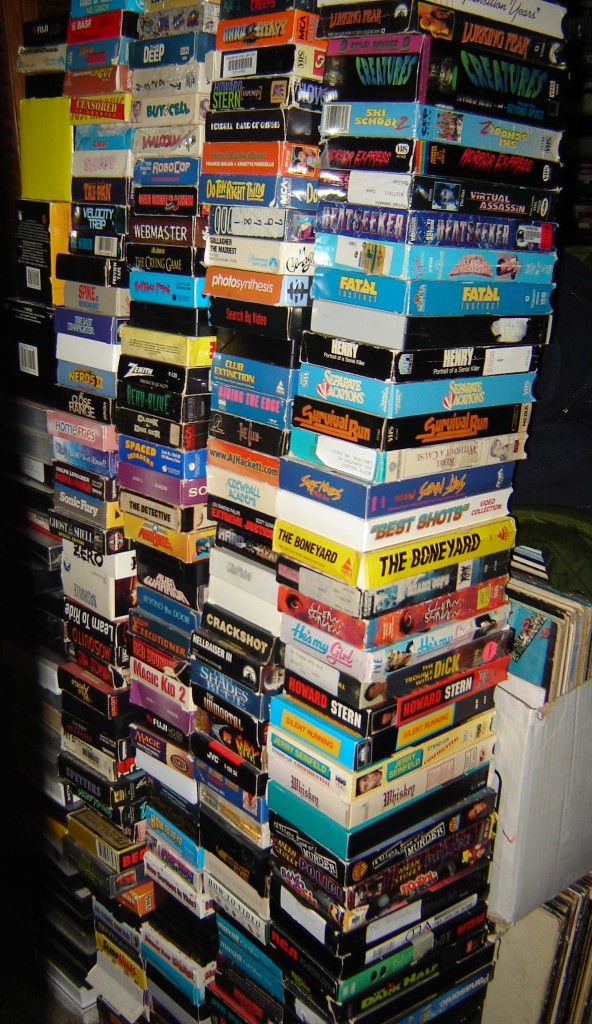Video Wars: VHS
This article was originally written for and published at TechTat on December 12th, 2011 It has been posted here for safe keeping.
Unless you’re relatively young, you probably remember VHS. Even if you are so young to never have used the format, odds are you’ve seen tapes appear in film, or have seen a VCR or two for sale at a thrift store. VHS tapes were the standard for how you saw recorded media. Whether you’re watching reruns of television shows, movies, music videos, or instructional videos, VHS was used for everything and lived in the homes of countless people.
VHS tapes first rolled out in the 1970′s by JVC, and were a major pillar in the video format wars of the time. The concept of movies you could watch in your home was a relatively new idea, and VHS caught on as a standard format that would go relatively unrivaled for decades. But why did VHS take off while so many other choices were available? From a technological standpoint, a VHS tape was actually pretty low on the totem pole when compared to other formats: the video quality was sub-par. However, the recording aspects of VHS were where the format took on a large following. VHS tapes were able to record video, which is a big step compared to other formats which only let you watch prepackaged films. On top of that, VHS has a standard play recording speed of two hours, allowing you to record two hours worth of anything to single tape which was a step up from other formats of the era. Why would this make a difference? Considering the high price of blank tapes, it’s easy to understand that getting more out of a tape means more bang for your buck. When you also consider that movies are played on television over two hour blocks, this only makes VHS more preferable.

The success of VHS can also be owed to how the technology was licensed. While Sony kept their Betamax technology to themselves, JVC offered VHS licensing to nearly every company that requested it. This helped the consumers who had developed a brand loyalty, and also created a more competitive marketplace which kept prices for both tapes and players going down. VHS continued to thrive for decades and was even improved upon with longer recording modes and high fidelity audio. Later, VHS would be adapted to other formats such as VHS-C (compact) for camcorders, D-VHS (digital) for high definition recordings, and S-VHS (super) used for higher resolution picture and professional use.
While VHS is now considered a forgotten technology, being surpassed by DVD and Blu-Ray, blank tapes are still being produced to this day, along with a handful of independent films. If you don’t have a VCR anymore, get one before it’s too late. Sure, it’s nice having crystal-clear video and sound, but there is something about VHS that gives you a warm feeling… and fuzzy picture.
